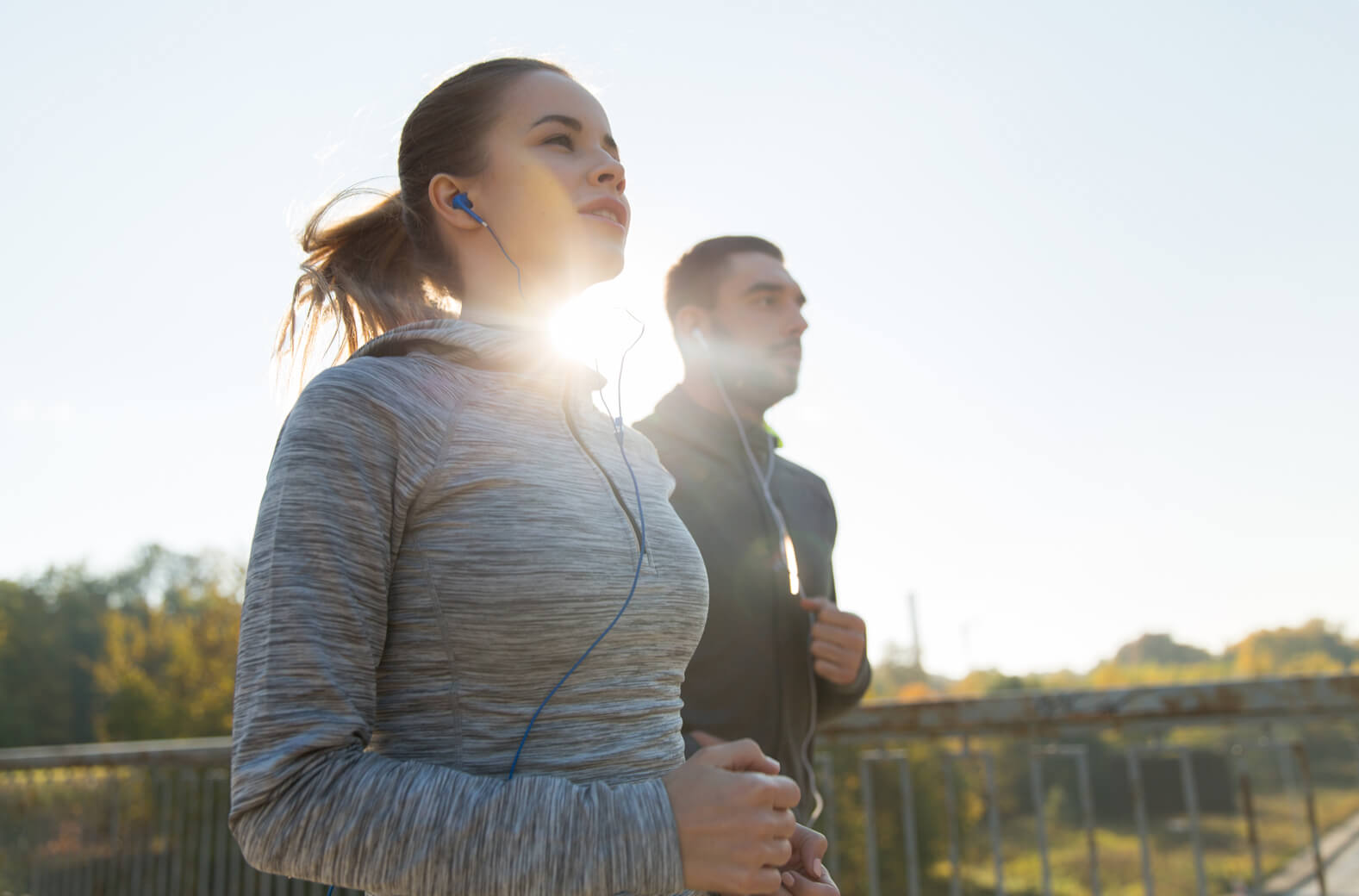
Which sleeping position is the best?
Did you know? With an average sleep time of 8 hours per night, we spend approx. 3-4 months per year in our favorite sleeping position. If we sleep on unsuitable pillows or in an unnatural position, tension is the order of the day the next day. But which sleeping position is really the best? You can find out more about this here.
Table of contents- Overview: The optimal sleeping position
- The supine position – the best sleeping position
- The side position – good for the back and stomach
- The prone position – bad for the joints
- How you lie in bed is how you lie
- Conclusion
1. Overview: The optimal sleeping position
The sleeping position should rather be called the falling asleep position, because over the course of the night we turn into different positions many times. This is important because staying in a certain position for too long can have a negative effect on our back and neck. Studies have found that once people have chosen their preferred sleeping position, they will continue to do so. So no matter how many times we toss and turn during the night, we always return to this favorite position.
Only 5% of people change from night to night. Of course, we decide for ourselves based on our personal feelings how comfortable we are lying on our stomach, back or side. But which sleeping position is actually considered by experts to be the healthiest for our bodies?
#1 The supine position - the best sleeping position
The supine position is considered the best among sleeping positions. But only about 7% of all people sleep in this situation. When we lie on our back, our head, neck and spine are in a neutral position with even pressure distribution. Because the face is not pressed against a pillow, this type of sleeping can also be best for preventing facial wrinkles.
But sleeping on your back still has one disadvantage: risk of snoring! According to a study cited in the New York Times, a whopping 54% of snorers are so-called "positional snorers." This means they only snore while lying on their back while sleeping. Changing to the side position is a simple trick to prevent snoring. We have included further tips against snoring in this article.
Tip: Make sure you have the right sleeping equipment. A thin, soft pillow is sufficient to support the optimal sleeping position.
#2 The side position - good for your back and stomach
Approx. 68% of people sleep on their side, with 38% preferring the right side and 30% preferring the left side. When we lie on our side, we snore less and the spine is in a neutral position, which means that neck and back pain is avoided because the back is relieved. Sleeping on your left side can also have a positive effect on stomach upset by aiding digestion and encouraging the reflux of stomach acid out of the esophagus. Nevertheless, this sleeping position is not entirely optimal, because lying on the side on the pillow compresses the skin on the face and décolleté and thus increases the formation of wrinkles.

Tip: Best suited for side sleepers are (silk) pillows that fill the shoulder-neck triangle and are gentle on the skin, as well as a good mattress that can adapt to the shoulders and hips .
#3 The prone position - takes some getting used to for the joints
Sleeping on your stomach is recommended by approx. 17% of people prefer. In fact, this posture is very effective against breathing problems and relieves pressure on the lumbar spine. However, the natural shape of the spine is blocked and laying the head to the side puts strong pressure on the neck vertebrae and jaw joints. In addition, lying on the side of the face promotes the formation of wrinkles.
Tip: Use no pillow or only a thin pillow so as not to overstretch the neck and shoulder area.
2. How you lie in bed is how you lie
Which sleep or Of course, the position you prefer to fall asleep ultimately depends on you and your body. With this overview of the advantages and disadvantages of the different lying positions and our little tips, it is very easy to optimize your own sleeping position. It is also important to make sure you have the right sleeping equipment and choose a pillow that suits your needs. You can read how to find the perfect pillow here in the sleep magazine.
3. Conclusion
-
Sleeping on your back prevents neck and back pain, minimizes the risk of wrinkles but promotes snoring.
-
The side position can ensure a comfortable night, especially for the back and if you have stomach problems, but it promotes the formation of wrinkles.
-
Sleeping on your stomach can quickly lead to tension and wrinkles.
Greetings and see you soon!




2 comments
Hi Cora,
da hast du absolut recht! Die Schlafqualität steht natürlich immer an erster Stelle und mit einem guten Schlaf hat unsere Haut dann auch die Möglichkeit, sich über Nacht zu erholen und selbst zu reparieren.
Unter unseren Produkten haben wir auch ein geeignetes Kissen für Bauchschläfer – das smart® RELAXING PILLOW. Es hat eine große, flache Auflagefläche und kann den Kopf in der Bauchlage gut stützen, ohne den Nacken zu stark abzuknicken. Weitere Infos über das Kissen findest du direkt in unserem Onlineshop und bei Fragen kannst du dich natürlich immer an mich oder das smartsleep®-Team wenden!
Liebe Grüße
Alisia
Alisia von smartsleep®
Ehrlich… ich bin Bauchschläferin. Lieber gut schlafen bzw einschlafen mit Hang zur Faltenbildung als morgens schlecht geschlafen aufwachen. Schlechter Schlaf sieht man auch im Gesicht. Und ein Kissen für Bauchschläfer habt ihr nicht?
Cora
Leave a comment
This site is protected by hCaptcha and the hCaptcha Privacy Policy and Terms of Service apply.